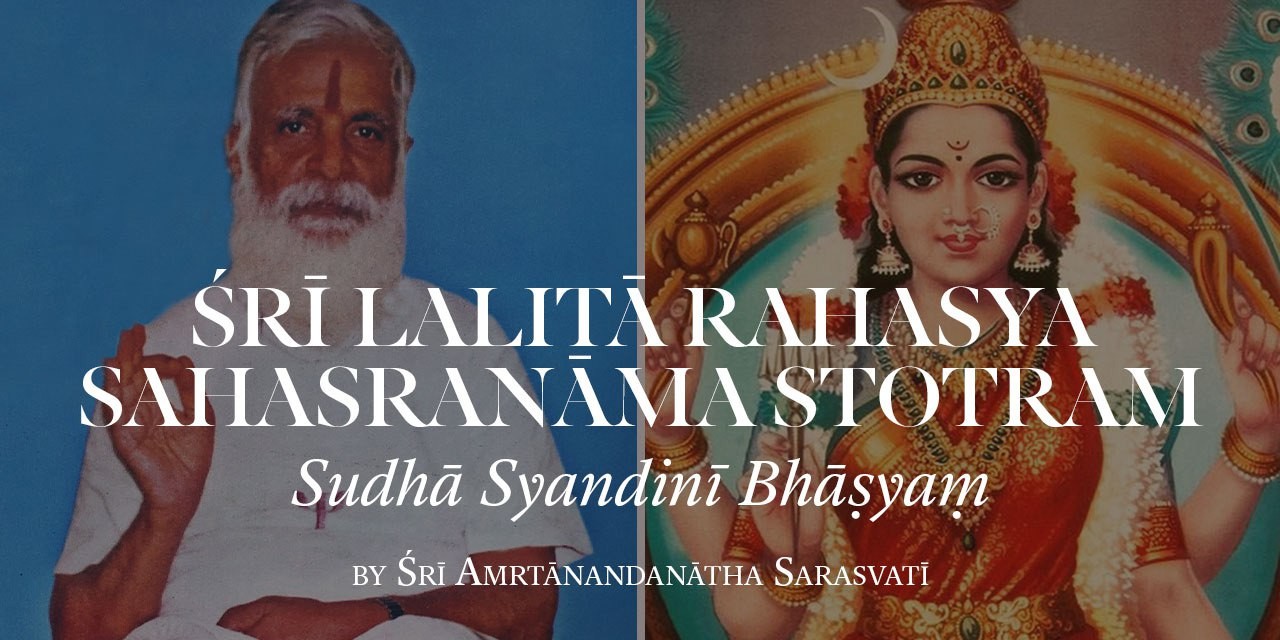- Edited

9) Krodhākārāṅkuśojjvalā
Repulsive, separative, explosive, “anger” is the weapon She wields in the second hand, the upper right one. Desire leads to love which tends to merge things, anger, being frustrated desire, turns back to become a diversifying force. Light is associated with the repulsive interactions. Light, even invisible light beyond the spectral range of vision, is pure energy, being “unbottled matter”. It travels away from the origin, measures the space; this is why Lalitā is effulgent with anger. The word ujjvala means effulgence.
The divine has four hands; in two of these hands She wields attractive interactions to create matter and repulsive interactions to create light to see the matter. Light is the means for contact at a distance. The cosmic stage is set; the individual life, who can see this cosmos is the job for Her other two hands, an equally important task; for without the individual who is there to see, desire or hate?
The connection between anger and light is very deep indeed. It has been expressed in many ways in Indian religious thought. Ṛgveda says, “Aghnimīle purohitam.” I worship fire (synonym for anger and light) as the source of revelations. In Durgā Saptaśatī, it is all anger, anger, anger, which Devi exhibits against divisive, destructive demonic forces; there She is shining as a thousand suns, as a burning mountain. It is well recognized among those who have tried it that offering sacrifices into the fire with saptaśatī recitation does indeed have two effects:
The first is a cathartic influence on the psyche turning it away from violence towards universal love and harmony;
The second is the direct communications of revelatory experiences from Godhead as a torrent of the flow of visions, thoughts, etc.
Lastly, there are innumerable instances describing the arousal of the serpent power, the Great Kuṇḍalinī as a veritable mountain of an angry torrent trying to take yourself out of yourself.
Also; it is concentration on this weapon, the least attractive of all of Lalitā's weapons, that gives liberation, the highest purpose of life.
Sādhana
The mind is like a pendulum; it tries to move in a direction opposite to that in which it is pulled, this is called its Vikṣepaśakti. It is possible to use this fact to clear the mind of anger by simulating anger within oneself. Expression of anger outside hurts the very individual who is angry; suppression of anger when it is due recoils later on at unexpected and most likely unwanted times; the best way is to express the anger in meditation by directing it against one's own internal enemies. Recitation of Caṇḍī Saptaśatī is in fact such a process; there the Devi, with all powers of all good forces combined into a monumental fury, very easily disposes of the demons. As one reads the text one cannot help identifying oneself with Devi. And that is the purpose of the recitation.
Source: Śrī Amṛtānandanātha Saraswatī "Sudhā Syandinī Bhāṣyaṃ" Typed Manuscript
(an incomplete commentary on Lalitā Sahasranāma)

